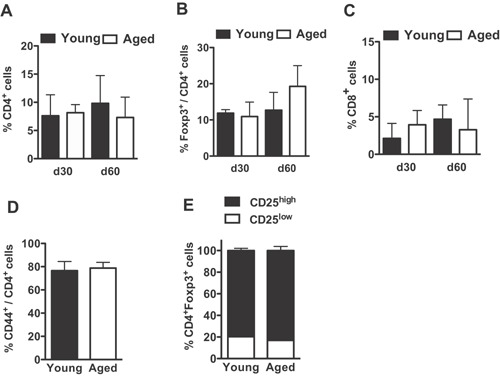Figure 5.

Aged and young T lymphocytes present similar ability to colonize the periphery when transferred to lymphopenic hosts. Young B6.RAG2−/− mice were adoptively transferred with unfractionated splenocytes from young (2 months old) or aged (18 months old) B6.Ba mice and the frequencies of T lymphocyte subpopulations were determined, by flow‐cytometry, in the peripheral blood 1 and 2 months after reconstitution. (A–C) Column bar graphs compare the percentages of (A) CD4+, (B) CD4+Foxp3+, and (C) CD8+ T cells found in hosts receiving young (n = 5) or aged (n = 5) donor splenocytes. (D–E) Frequencies of (D) CD44+ among CD4+ cells and (E) CD25low and CD25hi among CD4+Foxp3+ cells at 1 month after transfer (n = 5). Data are pooled from two independent experiments and statistical significance was determined by one‐way ANOVA with Bonferroni's Multiple Comparison Test (A–C) and unpaired student's t‐test (D) (*p < 0.05, **p < 0.01, ***p < 0.001).
